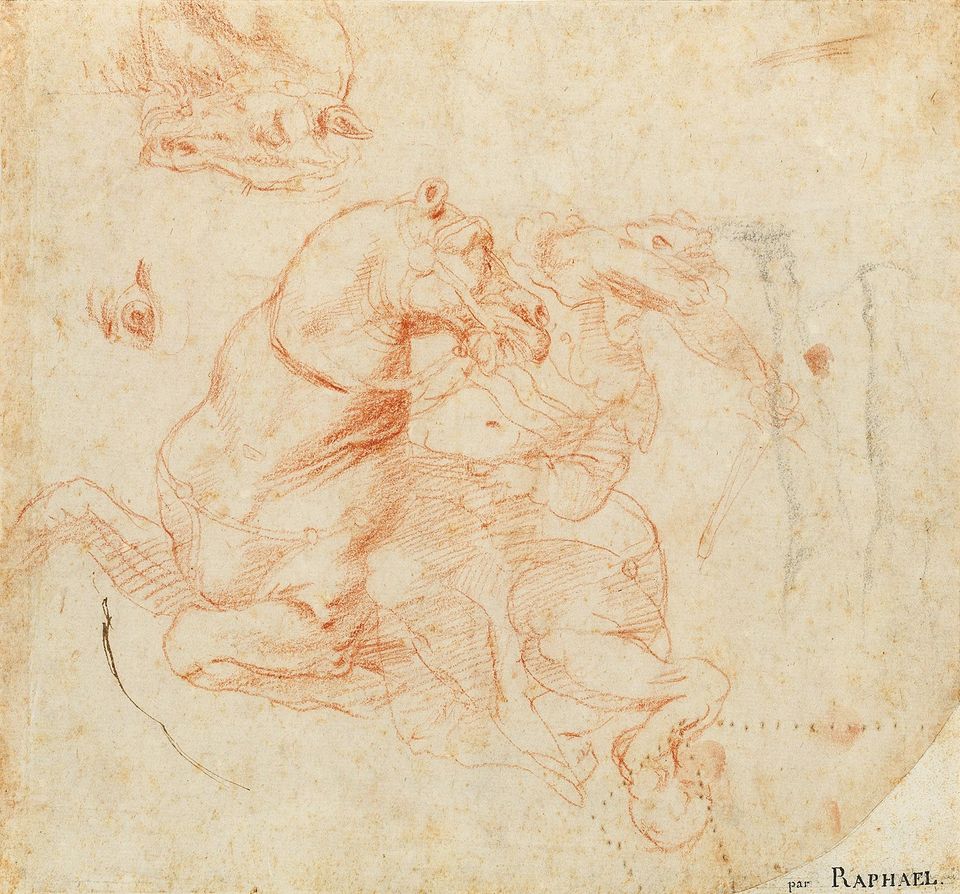Dorotheum’s Old Masters auction on October 25, 2023, undertakes an exciting rediscovery: a late drawing by the celebrated High Renaissance artist Raffaello Sanzio, known as Raphael. ‘Study for the Battle of the Milvian Bridge’, carries an estimate of €400,000 to €600,000. This newly identified work on paper, a sketch portraying a horse and rider, is a rare find from Raphael’s late period, making it especially significant for museum collections, art historians and enthusiasts.
The drawing holds particular importance within one of the grandest artistic projects of the 16th century: the decoration of the papal apartments in the Vatican. It was a preparatory study for a fresco section depicting the Battle of the Milvian Bridge in the Hall of Constantine. This fresco, part of the renowned ‘Raphael Rooms’, is a pinnacle in art history.
Executed in red chalk, this drawing sheds new light on Raphael’s artistic process, displaying a vitality, movement, and quality that mark it as an outstanding rarity. Dorotheum’s Old Master specialist, Mark MacDonnell, emphasizes its importance: “Compositional and stylistic details confirm that this is a preparatory study by Raphael for the celebrated fresco.”
The Battle of the Milvian Bridge, the central fresco of the Hall of Constantine, was a monumental portrayal commissioned by Pope Julius II and his successors. This depiction marked the triumph of Christianity over paganism, featuring a scene of intense emotion and action. The complexity of such a painting demanded extensive planning and preparatory drawings, making this newly discovered study invaluable.
This red chalk sketch is one of only three surviving drawings by Raphael’s hand for this particular fresco, with others held in the Louvre and the Ashmolean Museum in Oxford. Previously held in private collections and once misattributed to Rubens, this drawing was correctly identified as Raphael’s through careful comparative analysis of technique and composition.
The prominence of the sketched falling horse and rider within the finished fresco is evident. Although Raphael did not live to see the project’s completion, as he passed away in 1520, this drawing illustrates his deep involvement in the design. It also provides a unique glimpse into the day-to-day workings of a 16th-century artist’s workshop, showcasing the reuse of sheets to record ideas. Remarkably, the verso of this sheet contains drawings by Raphael’s assistant, Polidoro da Caravaggio, created later.
Dorotheum is to present this extraordinary discovery at its upcoming auction, offering art enthusiasts a chance to engage with Raphael’s genius in a way that brings the artist’s creative process to life.

